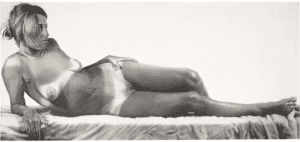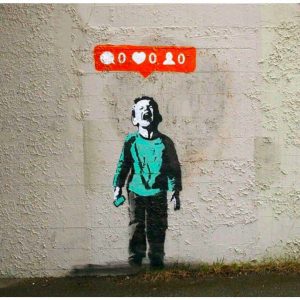
Born: 1937
Summary of David Hockney
Bright swimming pools, split-level residences, and suburban Californian landscapes by David Hockney are an odd mix of tranquilly and excitement. Shadows seem to have vanished from his 1960s acrylic canvases, which are as smooth as magazine pages. Flat planes coexist in a patchwork, obscuring our perception of distance. Hockney’s distinct style draws inspiration from a wide range of elements, including baroque, cubism, and, most recently, computer graphics. This British Pop artist, an iconoclast infatuated with the Old Masters, breaches every rule on purpose, revelling in the deconstruction of proportion, linear perspective, and colour theory. He demonstrates that orthodoxies are supposed to be shattered and that opposites can coexist, a message of tolerance that extends beyond the sphere of art and has far-reaching political and societal ramifications.
Hockney, like other Pop artists, revitalised figurative painting in a style that mirrored commercial visual language. His preoccupation with Cubism sets him apart from others in the Pop movement. Hockney, in the style of the Cubists, blends various scenes to produce a composite perspective, opting for difficult locations such as split-level mansions in California and the Grand Canyon, where depth perception is already difficult.
Another element that distinguishes Hockney from most other pop artists is his insistence on personal subject matter. He depicts scenes from his own and his friends’ lives in the domestic sphere. This puts him in the company of Alice Neel, Alex Katz, and others who painted their immediate surroundings in a way that defied categorization or movement.
Hockney was an outspoken supporter of LGBT rights, as he was also openly gay. Hockney’s brilliant greens, purples, pinks, and yellows are unequivocal statements in support of sexual freedom in the setting of a macho art milieu that regarded “beautiful colour” as effeminine.
Hockney is a predecessor of the photorealists in that he intentionally seeks to emulate photographic effects in his work. He’s also seen as a heretic by purists who believe that painting should be based solely on the artist’s firsthand observations of nature. Hockney’s research into the history of art has revealed that the Old Masters, from Vermeer to Canaletto, frequently employed the camera obscura (an early form of camera) to improve their optical effects, though this is not universally recognised. He indicates that if the revered Old Masters could use cameras, why can’t we?
Childhood
David Hockney was born into a working-class household in Bradford, Yorkshire, in northern England. Hockney describes his father, who was a conscientious objector during WWII, as having “a good heart.” “He believed that the world should be just.” He also romanticised the Communist Party’s ideas in Russia. Hockney remained opposed to ideologies and hierarchies while embracing his father’s anti-war position. “I was always fairly serious, but mischievous,” Hockney says of himself as a schoolboy. Since he was a child, he knew he wanted to be an artist.
Early Life
Hockney was accepted into the prestigious Bradford School of Art at the age of 16, where he studied traditional painting and life drawing with Norman Stevens, David Oxtoby, and John Loker. Unlike most of his peers, Hockney was a working-class artist who put in long hours, particularly in his life drawing workshops, noting, “I was there from nine a.m. to nine p.m.”
He was drafted for national service in 1957, but as a conscientious objector, he completed his service as a hospital orderly. Hockney came across the work of Russian dance entrepreneur Sergei Diaghilev about this time, and his candour about his sexual identity inspired him to reveal his own.
In 1959, Hockney enrolled at the Royal College of Art in London, where he studied under a number of well-known artists such as Roger de Grey and Ceri Richards. R.B. Kitaj, Allen Jones, and Peter Blake were among his pals. Students were required to submit an essay along with their final work at the time. Hockney rejected the offer, claiming that he only wanted to be assessed on his art. Surprisingly, the RCA, which prides itself on tradition, altered its standards to allow him to graduate.
Mid Life
Hockney’s first solo exhibition, presented at John Kasmin’s gallery in 1963, was a huge success. He visited Los Angeles for the first time the following year, where he met important intellectual and artistic luminaries such as Christopher Isherwood and designer Ossie Clarke, with whom he formed a close bond and later toured the Grand Canyon. He also served as best man during Clarke’s wedding to Celia Birtwell, for whom he painted and drew numerous portraits. He spent the next few years practically continuously in California, teaching at a variety of universities, including Berkeley and UCLA, as well as travelling extensively around the United States and Europe.
Hockney embraced the attitude of experimentation, exploration, and iconoclasm in California during the “swinging 60s.’ Hockney’s open love affairs and unrepentant attitude drew the attention of newspapers and publications at a time when homosexuality was still outlawed in the United States and the United Kingdom. From 1966 through 1971, he met and began a long-term relationship with Peter Schlesinger, who also served as his model on several occasions. Hockney has said of his unusual lifestyle and drug experimentation around this time: “It’s impossible to have a smoke-free bohemia.” There is no such thing as a drug-free bohemia. “It’s impossible to have a drink-free bohemia.”
The AIDS pandemic of the 1980s irrevocably impacted the art world, and it had a particularly deep influence on Hockney, who remembers, “In 1983, the first person I knew died of AIDS, and for the next ten years, it was a steady stream of victims. “I believe it would be a different place if all of those people were still here.” In 1988, the Tate Gallery in London was set to host a retrospective of Hockney’s paintings. In protest of anti-homosexual legislation being considered in Britain at the time, he threatened to cancel it.
Late Life
Hockney had an extremely prolific decade in the 1990s, with a large number of retrospectives and exhibitions all around the world. He started dating John Fitzherbert, a former chef, in 1991, and they dated for the next 25 years. In 1998, he finished A Closer Grand Canyon, which is one of his most notable large-scale works. He worked on a book on the Old Masters from 2000 to 2001, establishing a theory that these artists used the camera significantly earlier than previously realised.
Hockney gathered photocopies of Old Master paintings on a large wall in his LA studio for his research, ranging from Byzantine art to Van Gogh. While Hockney’s theory was initially regarded with scepticism, it has since gained general acceptance among art historians. Hockney relocated to Bridlington, a beach town in Yorkshire, in 2002. In the same year, he sat for a portrait by Lucian Freud for 120 hours. In exchange, Freud sat for him for four hours.
In 2012, Hockney suffered a stroke, which left him unable to speak for a time. “The stroke didn’t impair my drawing, and that’s the most important thing,” he says with relief. Dominic Elliot, one of Hockney’s workers, died in Hockney’s home only a few months later. He’d ingested cocaine and ecstasy, as well as a bottle of drain cleaner. John Fitzherbert, Hockney’s former partner, was still living with Elliot. Hockney was compelled to testify before the high-profile inquest that the death was not a homicide.
Famous Art by David Hockney
We Two Boys Together Clinging
1961

Hockney’s early work lacks the smooth landscapes and well-studied people that he would later establish. It is, however, one of the earliest to discuss homoeroticism, a major topic in his work. Two characters kiss and embrace in a composition that resembles a child’s painting. Symbols, rather than descriptions, are offered via stylized, blocky shapes and scribbled phrases. The sexual energy between the two figures is represented by little horizontal lines of colour running from one figure to the other. A hazy blue swath suggests a sense of location.
A Bigger Splash
1967

While studying at the University of California in Berkeley, Hockney created this landmark piece. A Bigger Splash was the culmination of two smaller works, A Little Splash (1966) and The Splash (1967), in which he refined his ideas (1966). A Bigger Splash is a much bigger painting, measuring around 94 94 inches. Hockney was one of the first painters to extensively use acrylic paint, which was still a relatively new medium at the time. He believed that, as a fast-drying medium, it was more suited to representing California’s hot, dry landscapes than traditional oil paintings. He painted this piece by attaching the canvas to the wall of his studio.
A Bigger Message
2010

A Bigger Message is the finale of a series of works by Hockney inspired by Claude Lorrain’s 1656 painting The Sermon on the Mount. It was created relatively late in Hockney’s career. Lorrain, a French Baroque landscape painter (in English, just “Claude”), was one of Hockney’s idols. Known for innovating the genre and basing his work on observation, Claude has had a major influence on Hockney’s landscapes. Hockney spent three weeks digitally cleaning Claude’s painting on his computer in order to make the artwork.
BULLET POINTED (SUMMARISED)
Best for Students and a Huge Time Saver
- This British Pop artist, an iconoclast infatuated with the Old Masters, breaches every rule on purpose, revelling in the deconstruction of proportion, linear perspective, and colour theory.
- He demonstrates that orthodoxies are supposed to be shattered and that opposites can coexist, a message of tolerance that extends beyond the sphere of art and has far-reaching political and societal ramifications.
- His preoccupation with Cubism sets him apart from others in the Pop movement.
- Hockney, in the style of the Cubists, blends various scenes to produce a composite perspective, opting for difficult locations such as split-level mansions in California and the Grand Canyon, where depth perception is already difficult.
- Another element that distinguishes Hockney from most other Pop artists is his insistence on personal subject matter.
- This puts him in the company of Alice Neel, Alex Katz, and others who painted their immediate surroundings in a way that defied categorization or movement.
- Hockney was an outspoken supporter of LGBT rights, as he was also openly gay. Hockney’s brilliant greens, purples, pinks, and yellows are unequivocal statements in support of sexual freedom in the setting of a macho art milieu that regarded “beautiful colour” as effeminate.
- Hockney is a predecessor of the Photorealists in that he intentionally seeks to emulate photographic effects in his work.
- He’s also seen as a heretic by purists who believe that painting should be based solely on the artist’s firsthand observations from nature.
- Hockney’s research into the history of art has revealed the Old Masters, from Vermeer to Canaletto, frequently employed the camera obscura (an early form of the camera) to improve their optical effects, though this is not universally recognised.
Information Citations
En.wikipedia.org, https://en.wikipedia.org/.
Recommend0 recommendationsPublished in Artists






Responses